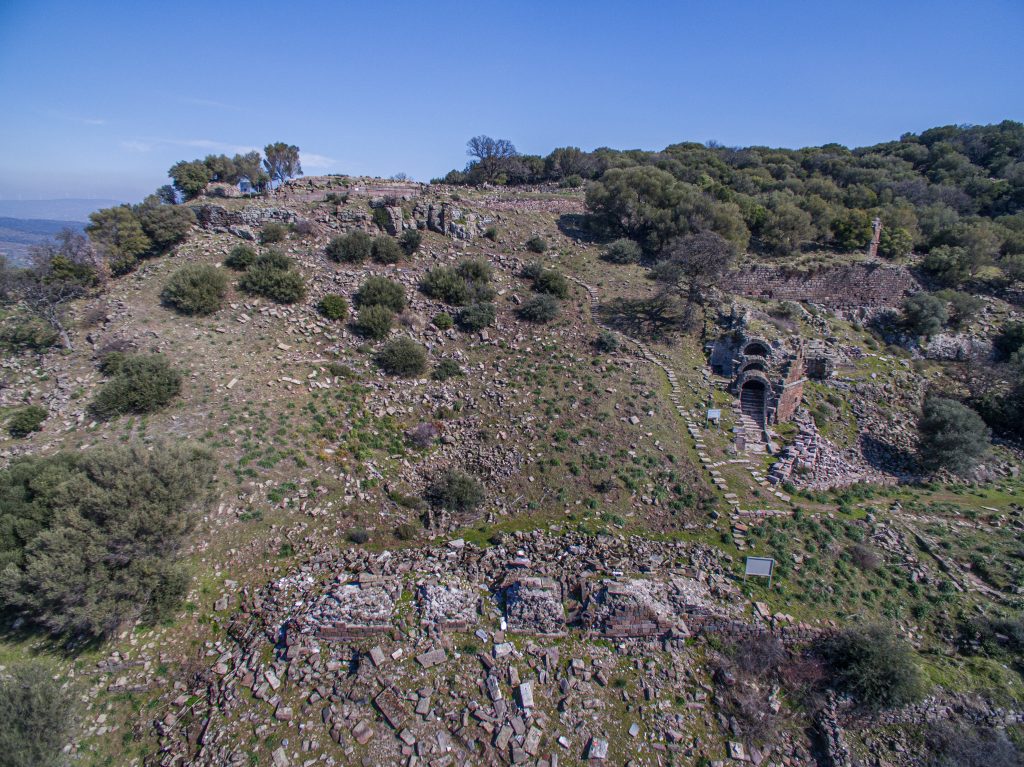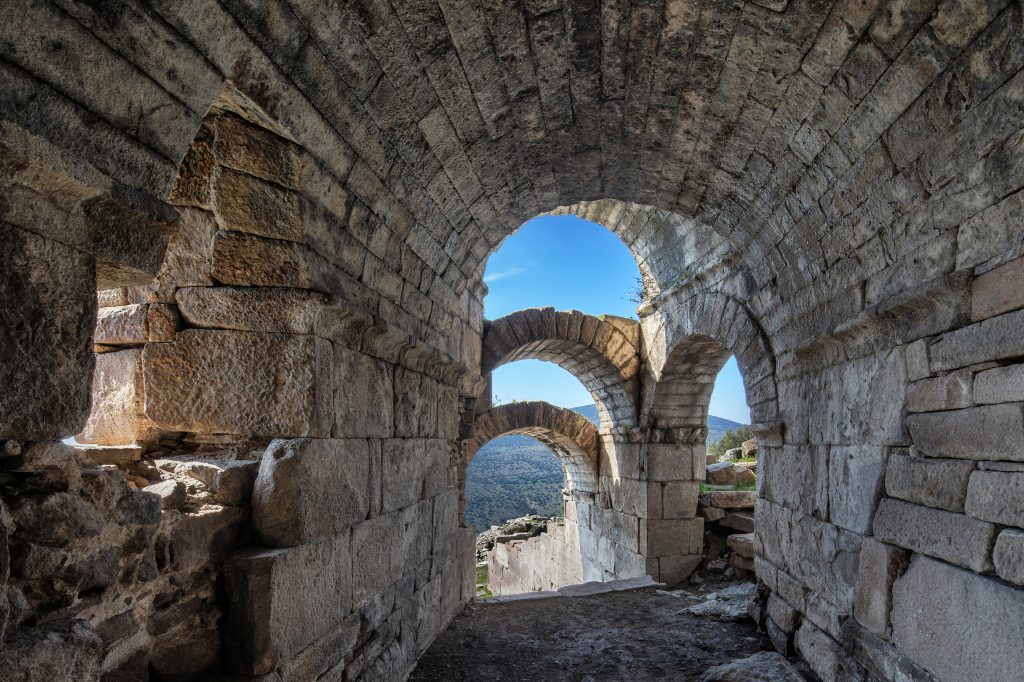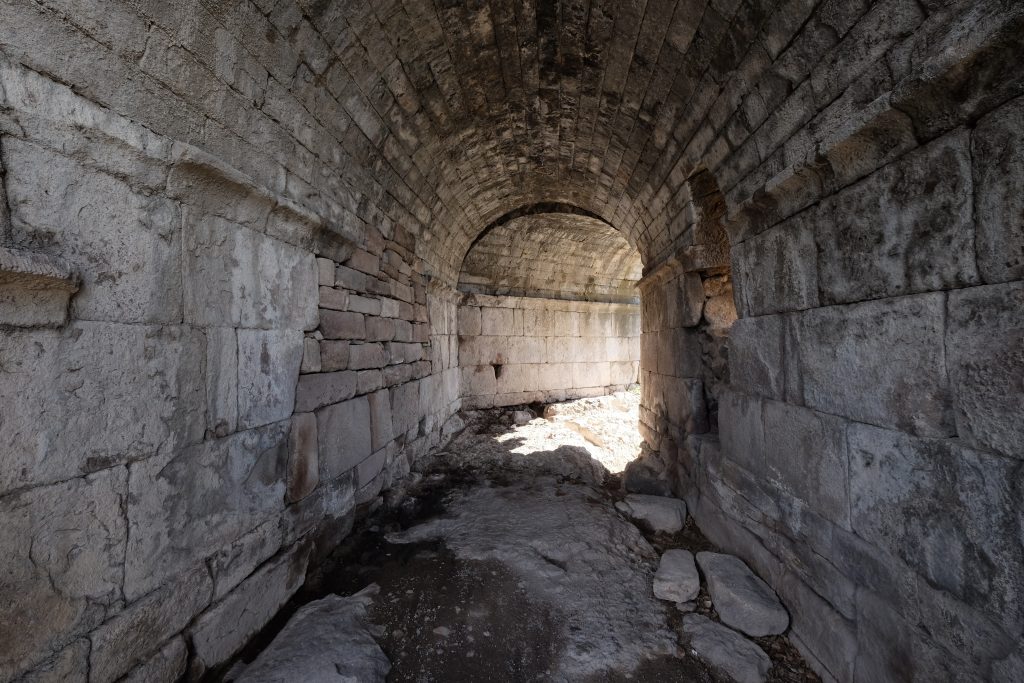.JPG)
The Theater of Aigai was built on the sloped ground at the west of the terrace of the Sanctuary of Athena. The placement of the Sanctuary of Athena and the Theater show similarities with the Sanctuary of Athena and the Theater of Pergamon. While Vitruvius defines an ideal location for a theater, he states that it should be sheltered from direct wind and sun. The Theater of Aigai is located in an area completely protected from northern winds with this placement. Most of the Hellen theaters in Anatolia were built facing the south or west. The Theater was also built facing west.

Studies conducted in the Theater show that the building had single diazoma. The seats have a multipartite form, like the seats of the Bouleuterion. The dimensions of scaenae fronts are 21×5,5 m and has three passages, each 0,82 m wide. Unlike small Asia Minor theater scaenae fronts, which has five passageways, three doors can be seen in renovated theaters such as Priene and Assos. The column drums and entablature fragments with floral motifs found in the rubble suggest a two-story building. The lime mortar used in the construction, added Vomitorium, and the Roman era entablature fragments in the scaenae debris indicates a renovated building atop the Hellenistic theater’s ruins after the earthquake of 17 CE. The widespread obserTheater The Buildings in Aigai 58 vation of the renovation of Hellenistic theaters in the Roman Period supports this view.

The Vomitorium is located at south of the Theater. The structure, which is thought to provide access to the cavea from the north and to the orchestra from the east, has three-stepped vaults. The Vomitorium walls with lime mortar filling, constructed in the second phase of the Theater construction on an east-west axis. The sidewalls were built with isodomic-coursed ashlars with orthostatic appearance and are filled with lime mortar

The analemma, where the Vomitorium rests on the south, was built with isodamic-coursed orthogonal ashlars with a slight bossage. The 1,35 m thick wall has similarities with the masonry techniques of the Period of Eumenes II. Although the building reveals a Hellenistic character from the exterior, it must have been built in the Roman Period, showing an emulation of Hellenistic architecture. Masonry technique of the interior wall of the Vomitorium and its vaulted structure are similar to the Middle Gymnasion of Pergamon. It is understood that the analemma, which is thought to have been built in the early 2nd century BCE, was canceled after the earthquake of 17 CE and ended with the Vomitorium added to the south. The new analemna was also continued to the south of the Vomitorium.
